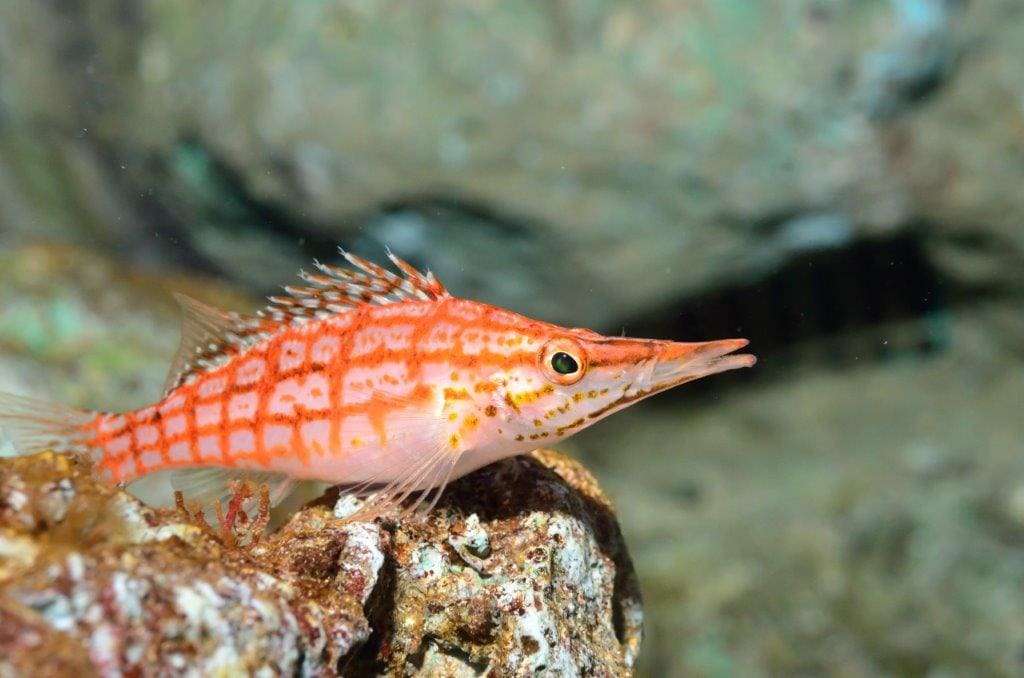
Size
13 cm is the species’ maximum length (5.1 inches).
Physical characteristics and behavior
The body of the Longnose Hawkfish has red stripes that resemble a plaid or snow fence and are white overall. The body of the fish is crisscrossed by the horizontal and vertical stripes. The Longnose Hawkfish has a distinctive big, beak-like nose. Its ten-ray dorsal fin has both softer and harder spines. Some spines have a fuzzy cirri at the end. The long-nosed hawkfish has long pectoral fins and a straight tail. The eyes of nocturnal hawkfish are large.
Habitat
76.8F to 84.2F is the optimal temperature range for Longnose Hawkfish. The following water parameters are present: dKH 8–12, pH 8–8, and sg 1.020–1.025.
Keeping as Pet

- Care
The Longnose Hawkfish prefers a calm environment and values having several places to perch and survey its aquatic domain.
- Temperature
Given that they are tropical fish, longnose hawkfish like temperatures of 76.8 to 84.2 F. The temperature of the water should be constant.
- Water pH
Longnose Hawkfish require water with a pH between 8.0 and 8.4. Your fish will not benefit from pH fluctuations.
- Tank Size
If there is only one Longnose Hawkfish present and there is no crowding, a tank with a minimum capacity of 40 gallons will be sufficient. Longnose Hawkfish will perform best and experience less territorial stress in a 100-gallon tank. As a result, there is enough room, often greater water quality, and fewer chances of territorial disputes.
- Tank Setup
The best way to help your Longnose Hawkfish live a happy life is to closely resemble their natural habitat. Longnose Hawkfish are found in the wild in the outer slopes of the reef. They prefer to hide amid sea fans and black coral because they are perching fish.
Possessing areas for it to perch is part of creating the perfect environment for Longnose Hawkfish. The fish will become quite anxious if it is unable to perch. If keeping live sea fans and black coral is not something you want to take on, longnose hawkfish will resort to perching on imitation rocks and coral or hanging out in caves and overhangs.
Since they are nocturnal, longnose hawkfish hide during the day. They do, however, have wide eyes for night vision and favour gentle lighting that is gentle on the retinas.
Last but not least, keep in mind that longnose hawkfish can jump. Make sure your tank has a sufficient depth and a tight-fitting lid that completely encloses the tank’s top.
- Tank Companions
Anthias, Banggai Cardinal fish, Blue-green Chromis, Butterflyfish, Clownfish, Damselfish, Dottybacks, Dwarf angelfish (as long as they’re not too small), Regal tangs, and wrasses are a few examples of fish that get along well with your Longnose Hawkfish.
Table





